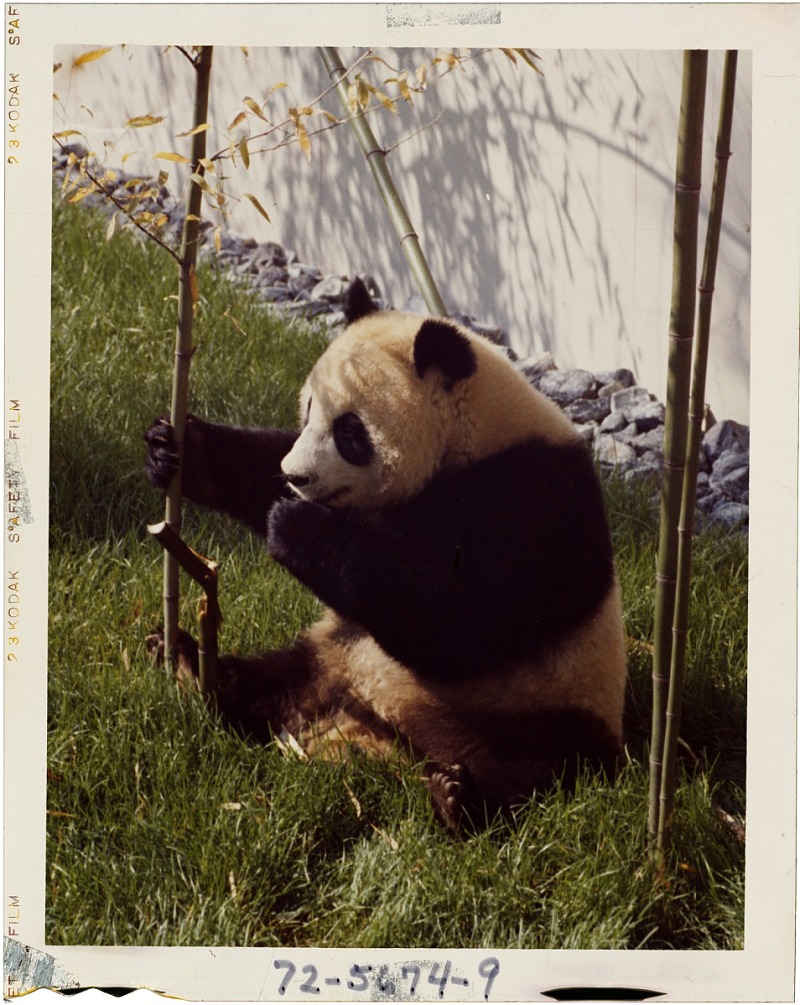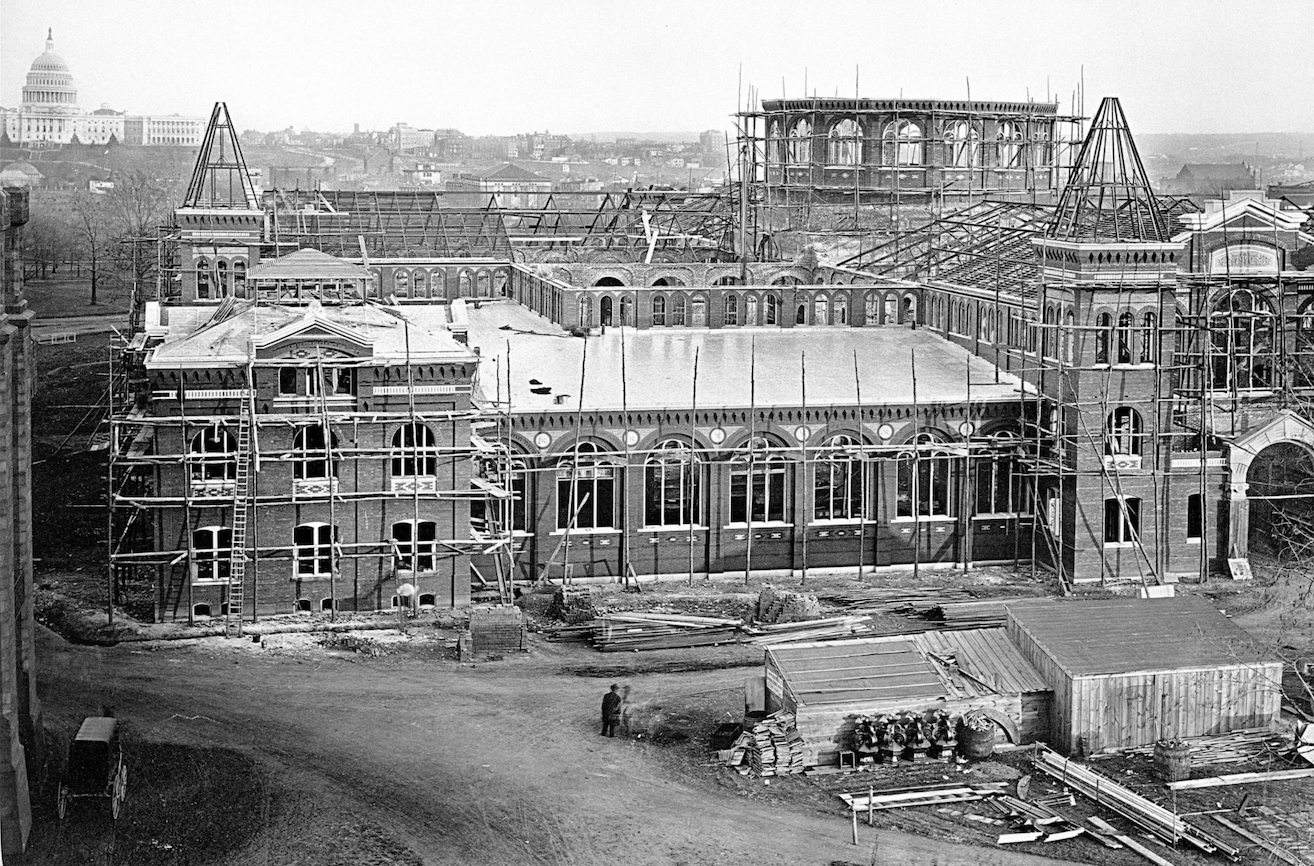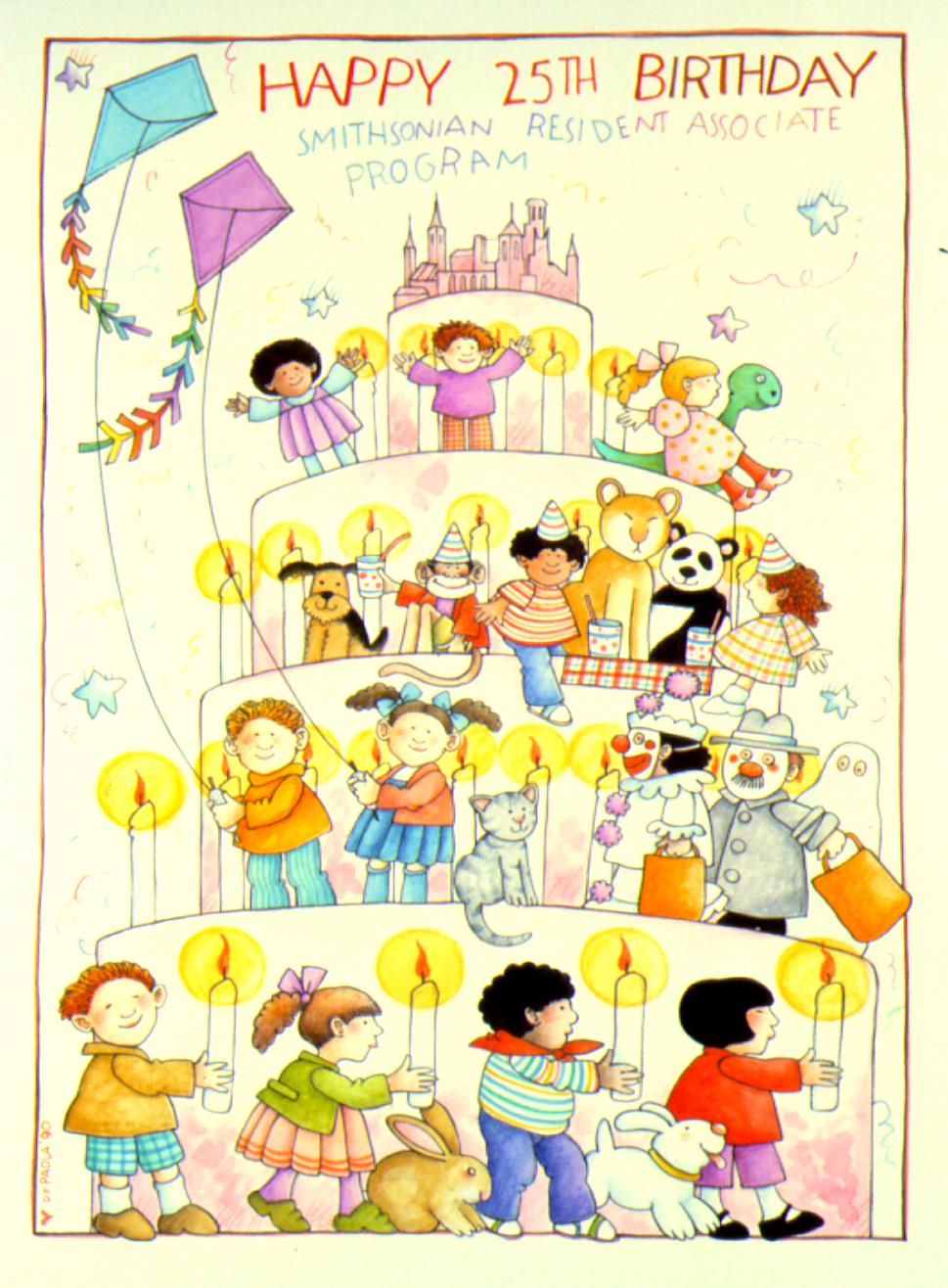Tuesday, August 10-the 175th anniversary of the founding of the Smithsonian-is a milestone that will marked in many ways by the Institution and by people all over the United States and beyond. We're getting an early start by spotlighting some Smithsonian-style celebrations and memories as an early birthday present. Feel free to unwrap it right now.
Here's another timely note: The Digital Digest is taking an August vacation. We hope you'll enjoy some summer fun, too. We'll be back in September.
An Orchid to Remember
 The Smithsonian Sunburst 175th golden yellow flower almost glows it is so vibrant.
The Smithsonian Sunburst 175th golden yellow flower almost glows it is so vibrant.
When it comes to finding distinctive ways to note an anniversary, the Smithsonian has a head start. After all, not every organization can find its own orchid hybrid. When Secretary Lonnie G. Bunch III first announced the Smithsonian's 175th anniversary celebration, Justin Kondrat, Smithsonian Gardens' lead horticulturist overseeing the orchid program, began to think of ways that beautiful flowering plant could be connected to the impressive milestone.
In late summer 2020, Kondrat reached out to orchid hybridizers-people who breed new orchid hybrids-in search of an unnamed orchid worthy of symbolizing the Smithsonian. After a few months, he believed he found the one. As Kondrat describes, "we found the perfect plant that exemplified the elegance and beauty of decades of selective breeding with Smithsonian's brilliance in the form of an orchid." The key was in the color: a solid golden yellow that echoed the institution's familiar sunburst symbol in its vibrance.
Now all it needed was a name. The top choice in a naming contest (appropriately revealed on National Orchid Day this year) resulted in x Brassolaeliocattleya Smithsonian Sunburst 175th joining the more than 6,000 specimens in Smithsonian Gardens' living orchid collection.
The Lens of History
 Manager Zack Foltz on the barrier reef, 2014. Caribbean Coral Reef Ecosystems Program, SERC
Manager Zack Foltz on the barrier reef, 2014. Caribbean Coral Reef Ecosystems Program, SERC
Photography at the Smithsonian reflects the history of a medium that can be one or many things at once-an art form, a research tool, a record of family life, the means of capturing a single, perfect moment, and much more. Photography as a means of documentation has remained a critical part of the Smithsonian's work throughout its 175 years, and such images-millions of them-can be found throughout the archives and the museums and their various divisions and departments.
From daguerreotypes to high-tech scientific images, photos as portraiture to photos as art, the institution's wide-ranging photography holdings collectively tell an eloquent and ever-evolving American story. Take in a small sampling of the breadth and depth of 175 years of photography at the Smithsonian in an online gallery.
175 Years of Photography
Our Favorite Things
 Giant Panda Ling-Ling at National Zoological Park. Smithsonian Institution Archives, Acc. 11-009, Image No. 72-5674-09
Giant Panda Ling-Ling at National Zoological Park. Smithsonian Institution Archives, Acc. 11-009, Image No. 72-5674-09
Among many ways the Smithsonian will celebrate its founding day on August 10 is with the public release of the first items in The 175 List. It's a roll call of people, collections, and historical moments that reflect how the Smithsonian has built on James Smithson's long-ago gift to America. The Smithsonian's Material Culture Forum organized the project, and Michelle Delaney, the National Museum of the American Indian's assistant director for history and culture, co-chaired a volunteer committee that emailed 15,000 surveys to Smithsonian people far and wide. A total of 2,700 responses came back, and the list curation process began.
"I knew the Hope Diamond, the panda, and the Ruby Slippers would be mentioned, as well as the [two newest museum openings]," Delaney said. But not all the responses were as predictable. She expected James Smithson and past secretaries and museum directors to be among those named in the "people" category. "But respondents also chose unsung people such as a head of collections or even entire museum curatorial units" like anthropology and political history.
Who and what made the final cut? We'll learn that as the complete 175 List is revealed in stages over the next several weeks. In the meantime, offer your own heartfelt "Happy Birthday!" to the Smithsonian and take a look at the first group of favorite things at the link below when the list goes live on Tuesday, August 10.
The 175 List
Building the Smithsonian
 United States National Museum Photographic Laboratory, United States National Museum Construction, 1880. Smithsonian Institution Archives
United States National Museum Photographic Laboratory, United States National Museum Construction, 1880. Smithsonian Institution Archives
The Smithsonian's buildings trace the history of architecture in the United States and provide a window into the institution's nearly 18 decades of growth and change. During the last 175 years, the Smithsonian has grown into a collection of iconic structures that line the National Mall and stand in New York City, Maryland, Belize, Chile, the tropical forests of Panama, and beyond.
The design of the Smithsonian's early buildings was a response to several questions: What does an institution for "the increase and diffusion of knowledge" look like? A library? A university? A museum? Those created throughout the years that followed had even more complex ones to consider. Survey the architectural evolution of several of the Smithsonian's most notable museums and facilities in a fascinating online tour through time.
Read the Story
Artful Anniversaries

Smithsonian Associates has commemorated a few notable anniversaries of our own since 1965, the year of our founding. And some very special posters created for our Art Collectors Program were part of the celebrations. For the 25th anniversary, the Smithsonian's Resident Associate Program (as the division was then known) commissioned beloved children's book illustrator Tomie dePaola to create Happy Birthday RAP. The full-color offset lithograph, printed from an original watercolor and pencil image, paid tribute to the program's activities for children and families.
Washington artist Gene Davis was commissioned to create a 15th anniversary silkscreened poster, as well as serigraphs for the program's 10th and 20th anniversaries. Each of these works displayed his trademark style of edge-to-edge vertical stripes in dazzling colors.
Have a special event to celebrate in your own life? Mark it with art. Original editions of DePaola's poster and Davis's 1980 silkscreen are available for sale through the Art Collectors Program.
Tomie dePaola Poster
Gene Davis Silkscreen